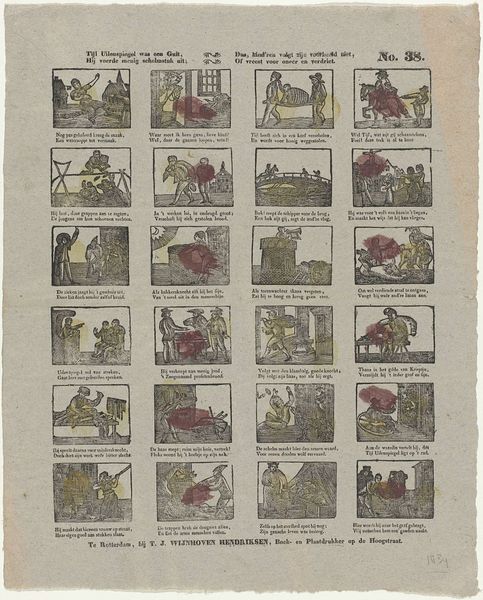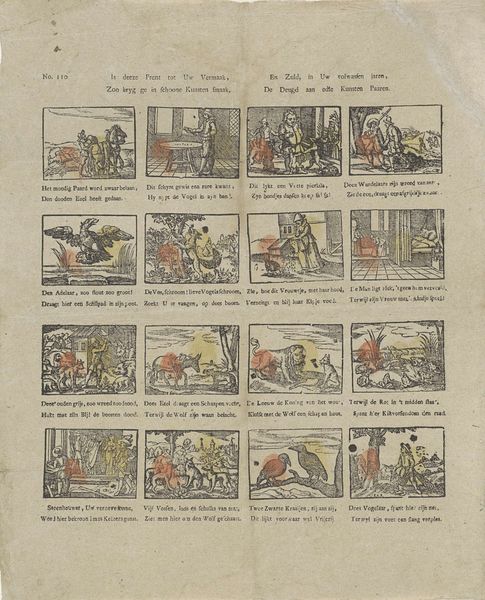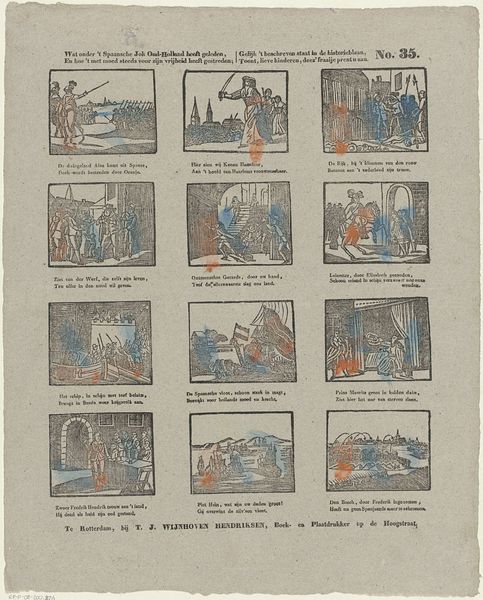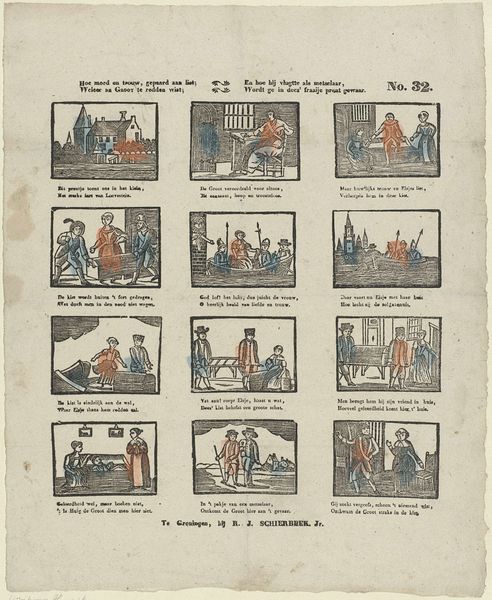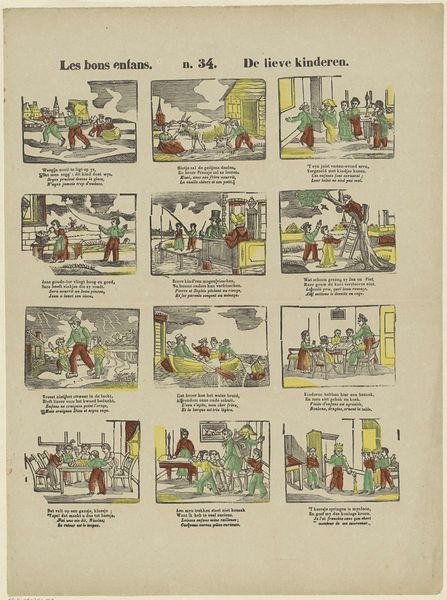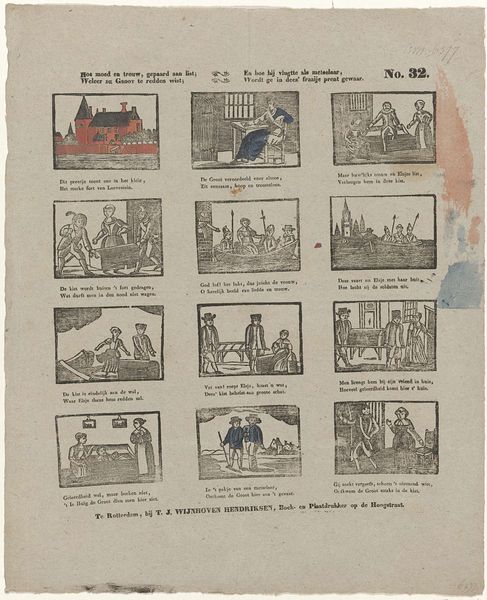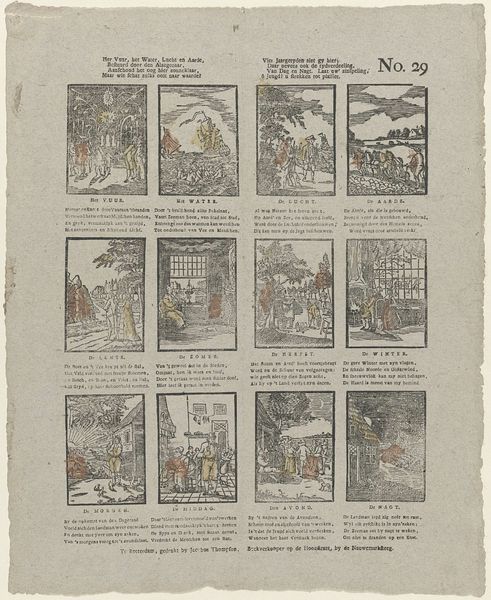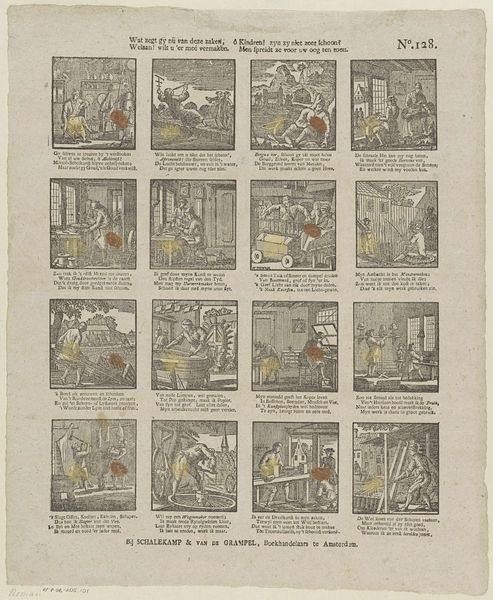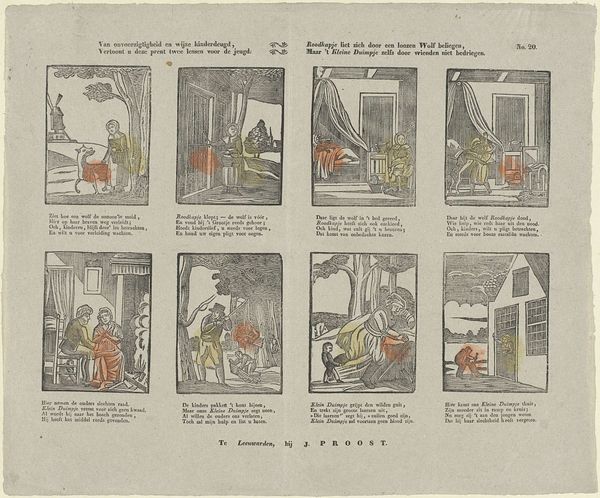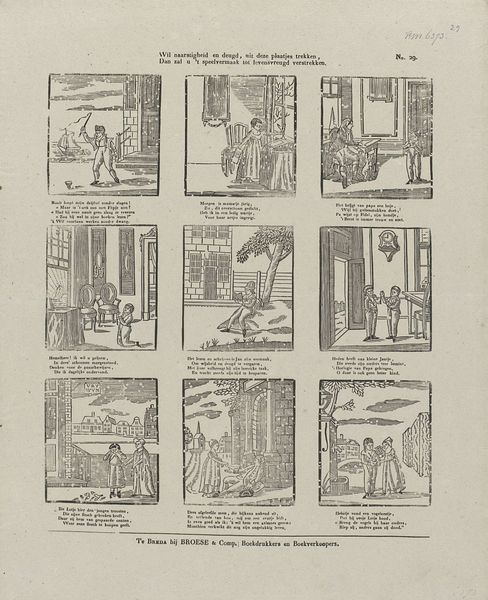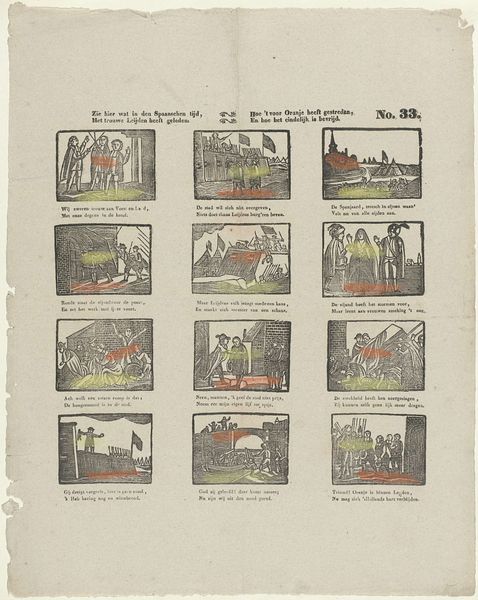
Deez' prent vertoont in menig beeld, / Oud-Hollands roem in vroeger dagen; / En hoe der vaad'ren heldenteelt, / Het leven steeds voor 't land dorst wagen 1832 - 1850
0:00
0:00
theodorusjohanneswijnhovenhendriksen
Rijksmuseum
print, woodcut, engraving
#
narrative-art
#
dutch-golden-age
# print
#
old engraving style
#
woodcut
#
engraving
Dimensions: height 409 mm, width 331 mm
Copyright: Rijks Museum: Open Domain
Editor: So, this is “Deez' prent vertoont in menig beeld…", an engraving and woodcut print by Theodorus Johannes Wijnhoven-Hendriksen, sometime between 1832 and 1850. It looks like a series of small narrative scenes. I'm immediately drawn to the printing technique; it seems rather basic, almost like folk art. What strikes you about it? Curator: What I find interesting is the way this print, using relatively simple materials and techniques, engages with ideas of Dutch national identity and historical narrative. Note that this piece has been constructed from several scenes presented as historical highpoints and consider the labour that went into both its creation and its distribution, both essential components of Dutch visual culture in the 19th Century. Does that framework shift your perception? Editor: It does! I was focused on the artistic merit, but you're drawing attention to the whole *process* – the artist's labor, the materials, the potential for mass production… So, is it challenging traditional distinctions between "high art" and craft? Curator: Precisely! And also prompting you to question for whom this work was created, what messages it was trying to send about nationhood, and through what channels the images would have moved to be consumed and internalized in society. Look at the layout itself. Do you think that there is any link to printed popular forms of the time, like illustrated newsheets and song sheets? Editor: I can see that—like a page from a storybook or something. I hadn’t considered it in those terms before. Curator: And it highlights the political element and use of popular history that informed so many everyday items. This challenges our modern-day concept of "art" itself and brings focus to modes of mass communication. Editor: I now view this as a deliberately accessible representation of Dutch pride through reproducible visual and material means, which deepens my understanding beyond mere aesthetic appreciation. Thank you. Curator: My pleasure! Examining it through the lens of material production helps to uncover so much more about its original meaning.
Comments
No comments
Be the first to comment and join the conversation on the ultimate creative platform.
